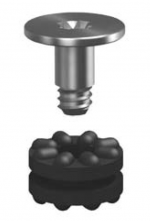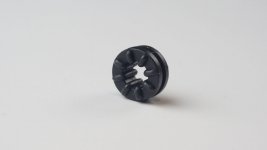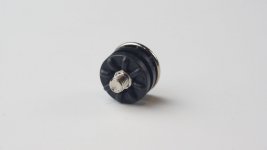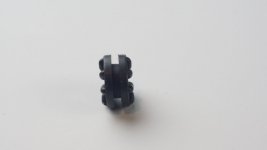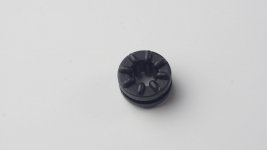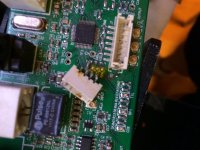Hey Ian, do you know when you think next GB will be? Few weeks?
I still have some PCM boards in stock, so I can start GB for it very soon, yes, in few weeks. But I have to run a new production for FIFO and clock board, that will take me longer.
Ian
Hi Ian
I have some FOX FVXO-HC73 SERIES
90.3168 MHZ 3.3V HCMOS SMD
(for dac master clock)
didnt try them yet, but information may be usefull for You.
btw please take a look to the specs, are this fox model good enough?
.
please count me for 2 boards of new clocks 🙂
I have some FOX FVXO-HC73 SERIES
90.3168 MHZ 3.3V HCMOS SMD
(for dac master clock)
didnt try them yet, but information may be usefull for You.
btw please take a look to the specs, are this fox model good enough?
.
please count me for 2 boards of new clocks 🙂
Hi Ian
I have some FOX FVXO-HC73 SERIES
90.3168 MHZ 3.3V HCMOS SMD
(for dac master clock)
didnt try them yet, but information may be usefull for You.
btw please take a look to the specs, are this fox model good enough?
.
please count me for 2 boards of new clocks 🙂
Thanks Zoran,
All other 90.3168 XO I have are not very good. I'll look into this one. Hope some improvements.
Regards,
Ian
New anti-vibration solution
Jitter can also be introduced from mechanical vibration through clock board by crystal oscillator. For a high-end audiophile grade clock board, to isolate mechanical vibration is one of the basic requirements.
Rubber-ring suspension was used last time for Dual XO clock board. But the problem was that they are not very durable and it’s also very hard to source suitable ones for the KIT, though some alternative solutions were already posted on the thread.
I found this anti-vibration screw grommets solution recently. They look quite decent. I noticed that the laser pick-up in a DVD drive or CDROM has similar solution to isolate the vibration.
Maybe I can include this new anti-vibration solution into my new DUAL XO II clock board design.
Ian
Jitter can also be introduced from mechanical vibration through clock board by crystal oscillator. For a high-end audiophile grade clock board, to isolate mechanical vibration is one of the basic requirements.
Rubber-ring suspension was used last time for Dual XO clock board. But the problem was that they are not very durable and it’s also very hard to source suitable ones for the KIT, though some alternative solutions were already posted on the thread.
I found this anti-vibration screw grommets solution recently. They look quite decent. I noticed that the laser pick-up in a DVD drive or CDROM has similar solution to isolate the vibration.
Maybe I can include this new anti-vibration solution into my new DUAL XO II clock board design.
Ian
Attachments
I hope that you can make the new board physical compatible with the old one so that it can be a slot-in replacement for e.i. the dual-XO/Si570 avoiding need to remake out mechanical designs...
//
//
I hope that you can make the new board physical compatible with the old one so that it can be a slot-in replacement for e.i. the dual-XO/Si570 avoiding need to remake out mechanical designs...
//
That for sure 🙂
Ian
I've added the Amanero combo384 USB-I2S adapter to the FIFO setup via the SPDIF board backdoor, but kept on having noise/distortion when I tried playing 352.8 or 384 kHz files. At first the distortion wasn't very noticeable, but after a minute or two of playing a file, it became progressively louder, and remained that way for all subsequent files played. When I changed to 192 kHz files, I couldn't hear any distortion.
My setup is the following: Amanero -> SPDIF backdoor -> FIFO -> Isolator -> Si570 -> I2S-to-PCM.
If anyone else has this problem, what fixed it for me (after eliminating the player and DAC as culprits) was to change the Amanero's CPLD firmware to CPLD_1080_XC12 "lrclk - sclk - data reduced delay", and keeping the CPU firmware to firmware_1080.
Now 384 kHz files play without any noise nor distortions.
Paul
My setup is the following: Amanero -> SPDIF backdoor -> FIFO -> Isolator -> Si570 -> I2S-to-PCM.
If anyone else has this problem, what fixed it for me (after eliminating the player and DAC as culprits) was to change the Amanero's CPLD firmware to CPLD_1080_XC12 "lrclk - sclk - data reduced delay", and keeping the CPU firmware to firmware_1080.
Now 384 kHz files play without any noise nor distortions.
Paul
Could You explain more how to apply firmware to amanero and where did You download firmware file, please? 🙂
Hi Zoran,
I've downloaded the OEM tool (115) from this location: Amanero Technologies and followed the instruction in the ReadMe file. The Amanero is updated via USB.
Once you run ConfigTool.exe you can pick the firmware to apply to the CPLD from a drop down menu.
Paul
I've downloaded the OEM tool (115) from this location: Amanero Technologies and followed the instruction in the ReadMe file. The Amanero is updated via USB.
Once you run ConfigTool.exe you can pick the firmware to apply to the CPLD from a drop down menu.
Paul
Amanero USB 384KHz issue fixed by new FW
Hi Paul
Thank you for your good news.
Mine Amanero was the new version I think, so I didn’t have this 384 KHz problem. Glad you fixed it by new FW. It seems all USB work for 384 KHz now with the most upgrated FW.
Regards,
Ian
I've added the Amanero combo384 USB-I2S adapter to the FIFO setup via the SPDIF board backdoor, but kept on having noise/distortion when I tried playing 352.8 or 384 kHz files. At first the distortion wasn't very noticeable, but after a minute or two of playing a file, it became progressively louder, and remained that way for all subsequent files played. When I changed to 192 kHz files, I couldn't hear any distortion.
My setup is the following: Amanero -> SPDIF backdoor -> FIFO -> Isolator -> Si570 -> I2S-to-PCM.
If anyone else has this problem, what fixed it for me (after eliminating the player and DAC as culprits) was to change the Amanero's CPLD firmware to CPLD_1080_XC12 "lrclk - sclk - data reduced delay", and keeping the CPU firmware to firmware_1080.
Now 384 kHz files play without any noise nor distortions.
Paul
Hi Paul
Thank you for your good news.
Mine Amanero was the new version I think, so I didn’t have this 384 KHz problem. Glad you fixed it by new FW. It seems all USB work for 384 KHz now with the most upgrated FW.
Regards,
Ian
Hi Ian,
Have you finaly planed like you writed a date to send the I2StoPCM boards please ? What is this waiting list open one year becomming ?
thanks,
Eldam
Have you finaly planed like you writed a date to send the I2StoPCM boards please ? What is this waiting list open one year becomming ?
thanks,
Eldam
please someone wrote exactly the link to downoload.
.
CPLD firmware to CPLD_1080_XC12 "lrclk - sclk - data reduced delay"
.
because it is not such a description on the amanero officioal site...
thanks 🙂
.
CPLD firmware to CPLD_1080_XC12 "lrclk - sclk - data reduced delay"
.
because it is not such a description on the amanero officioal site...
thanks 🙂
I easily weld the Pulsar power board to connector XO.Very good result.
http://www.diyaudio.com/forums/vend...clock-ultra-low-noise-ocxo-3.html#post4101644
reference to Pulsar thread
http://www.diyaudio.com/forums/vend...clock-ultra-low-noise-ocxo-3.html#post4101644
reference to Pulsar thread
- Home
- Source & Line
- Digital Line Level
- Asynchronous I2S FIFO project, an ultimate weapon to fight the jitter
